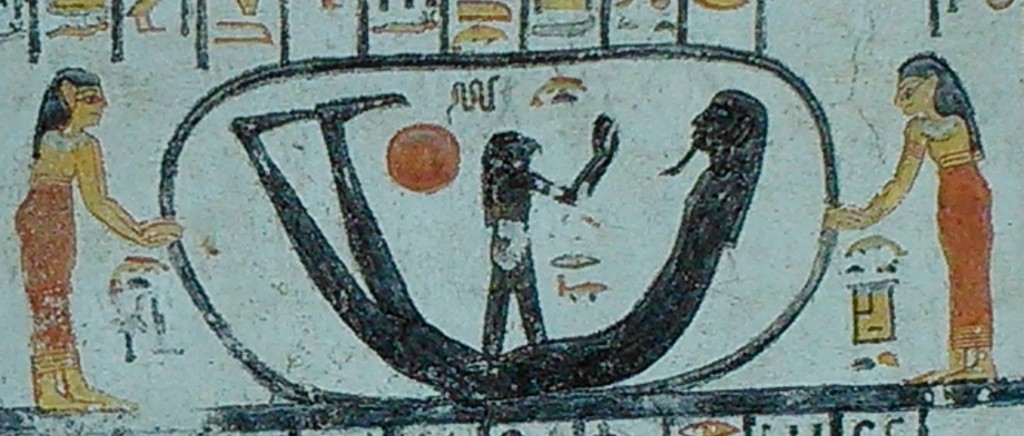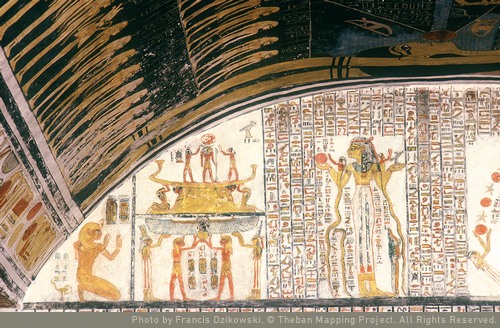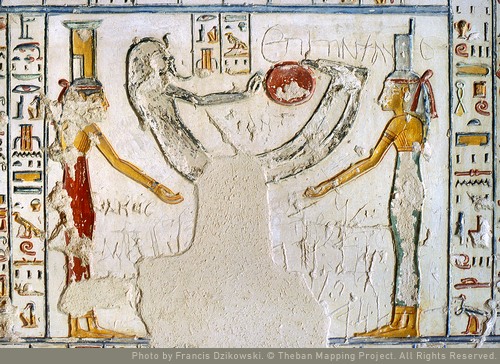The religion of Ancient Egypt developed during the New Kingdom sophisticated religious texts, which combined the solar theology with the Myth of Osiris. As a consequence, the art of ancient Egypt included in its corpus of images a new solar-Osirian iconography.
As we saw in the previous posts, the artists of Ancient Egypt started painting during the XVIII Dynasty the solar god Khepri in the company of two human kneeling figures of Osiris in the eleventh hour of the Amduat. In the XIX Dynasty, Isis and Nephthys, the two mourners of Osiris took part of the solar imagery and they were depicted at both sides of Re-Osiris and of the solar disk.
During the following history of Ancient Egypt this tendency was even more evident. In the XX Dynasty the artists of Ancient Egypt created for the Book of the Caverns and The Book of the Earth new icons of the solar rebirth with the assistance of Isis and Nephthys:
In the tomb of Ramses V-VI, the posthumous conception of Horus was depicted in section D of the Book of the Earth; Isis and Nephthys stand at both extremes of Osiris (inside an oval), in front to him a falcon-headed man (Horus) worships his father; the solar disk upon them solarizes the scene.

Isis and Nephtys with the corpse of Osiris. Horus is over Osiris. Posthumous conception of Horus. Book of the Earth. Tomb of Ramses V-VI. XX Dynasty. Photo: The Theban mapping Project
In the same section, but in an upper register the ram-headed solar god is represented on his solar bark worshipped by Thoth and Khepri, and this solar element is held by Isis and Nephthys.

The solar bark worshipped by Thoth and Khepri, this solar element is held by Isis and Nephthys. Book of the Earth. Tomb of Ramses V-VI. Photo: The Theban Mapping Project
In this same tomb, the chapter four of the Book of the Caverns presents a scene of Isis and Nephthys outstretching their arms under the image of Osiris, who is raising in the company of a solar disk.

Isis and Nephthys with the rising Ositis and Re. Chapter four of the Book of the Caverns. Tomb of Ramses V-VI. Photo: The Theban Mapping Project.
But the most evident proof of the importance of Isis and Nephthys in a rebirth process is in the Books of the Day and Night, which we will treat in the following post…
Fascinating imagery and insightful exposition. Keep it up.